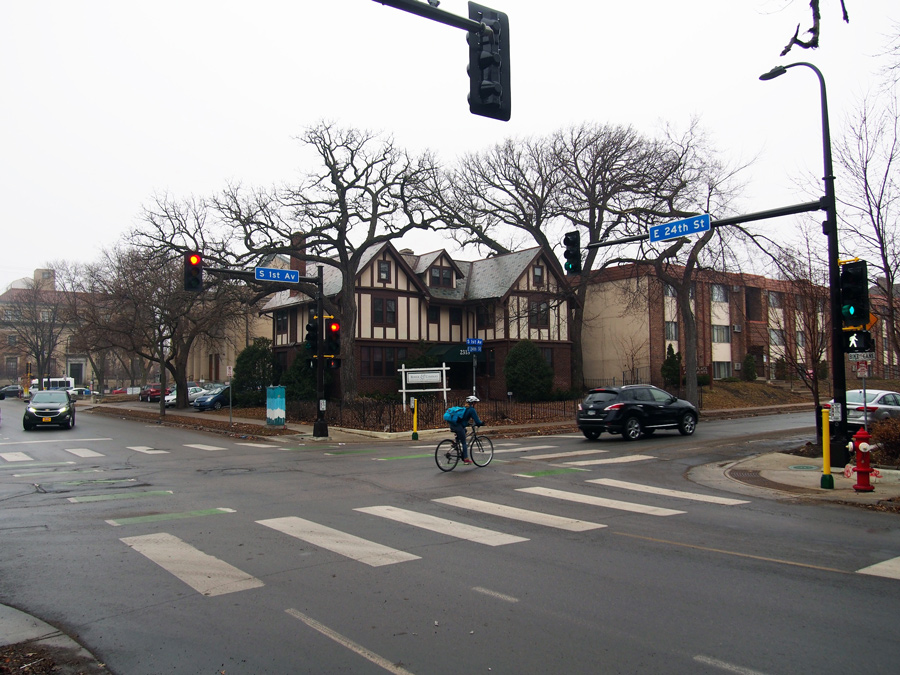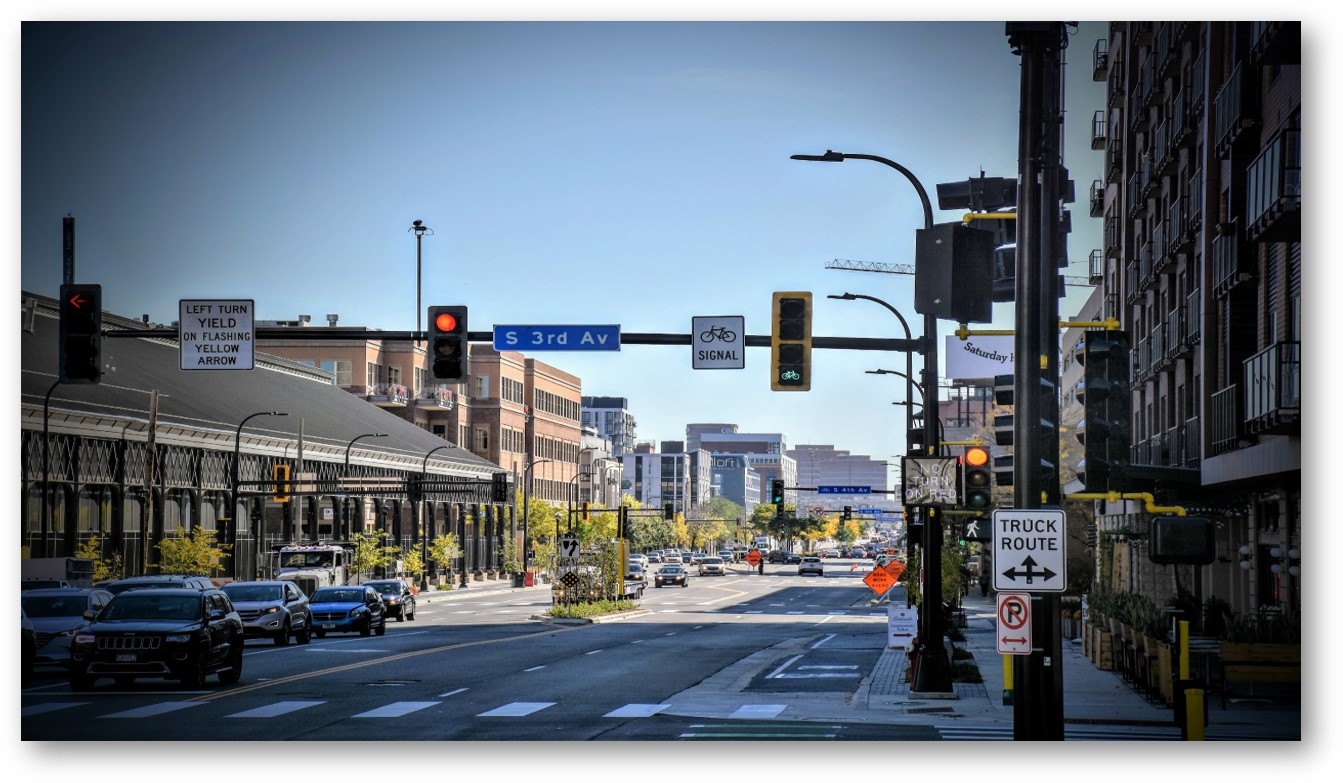Strategy 7 Align traffic signal operations with the Complete Streets Policy.
The actions within this strategy are divided into two categories:
Action we will DOActions we will SUPPORTAction we will do are followed by “DO” and are colored in dark gray, and actions we will support are followed by “SUPPORT” and are colored in light gray.
Learn more about how we get thereTraffic signals are timed and coordinated citywide to promote safe and consistent travel times. The actions below do not include exhaustive adjectives like ‘all’ and ‘every’ because specific movements allowed by a traffic signal may have a negative impact for some other competing use; this approach does not indicate a lack of commitment to completing this strategy but rather realistically approaching its implementation. For example, longer walk times for pedestrians goes against shorter cycle lengths, which also have benefits for pedestrians. Automatic display of the WALK signal without having to push a button, may, in some cases extend the total cycle length, creating additional delay for pedestrians and transit vehicles. Transit queue jumps prioritize those travelling on bus or other transit, but elongate waiting times for pedestrians crossing that street – the same holds true for green arrows for specific turning time for vehicles.
The City is doing adjustments on most traffic signals in 2020 to align with new, lower speed limits. This adjustment is being done with recognition that a larger, citywide alignment of signals with Complete Streets will be done in the future.
Actions to align traffic signal operations with the Complete Streets Policy.
Street Operations 7.1
Identify locations where operation of traffic signals should be evaluated to prioritize pedestrian mobility, comfort and safety.
Supported goals:
Safety Equity Mobility
Related actions:
Difficulty:
Low
Timeframe:
2020-2023 (Years 0-3)
Street Operations 7.2
Implement transit advantages along all high frequency transit corridors, through transit only lanes, transit signal priority, queue jumps and other treatments as appropriate.
Supported goals:
Safety Equity Mobility
Related actions:
Difficulty:
Medium
Timeframe:
2020-2023 (Years 0-3)
Status:
On-going
Street Operations 7.3
Use traffic signals to increase efficiency of people biking. Include specific bike signals on the All Ages and Abilities Network, and time signals to reduce the need for people biking to stop.
Supported goals:
Safety Equity Mobility
Related actions:
Difficulty:
Medium
Timeframe:
2024-2027 (Years 4-7)
Street Operations 7.4
Retime traffic signal coordination to encourage vehicle speeds at or below the posted speed limit.
Supported goals:
Safety Mobility
Related actions:
Difficulty:
Low
Timeframe:
2020-2023 (Years 0-3)


